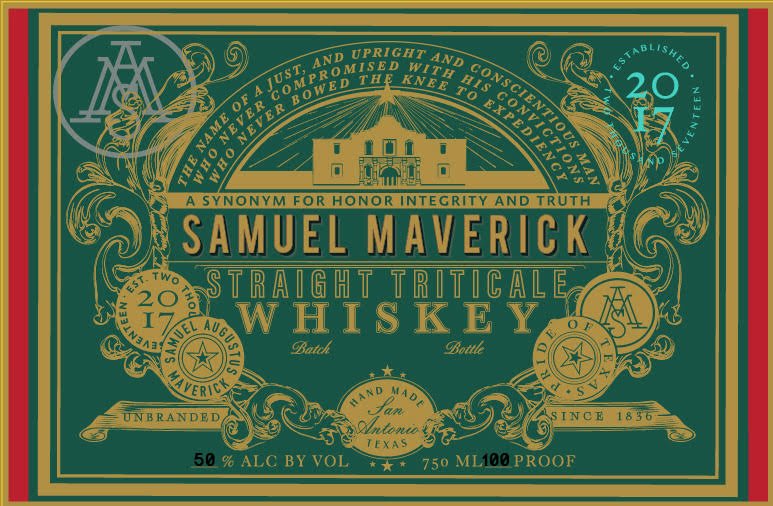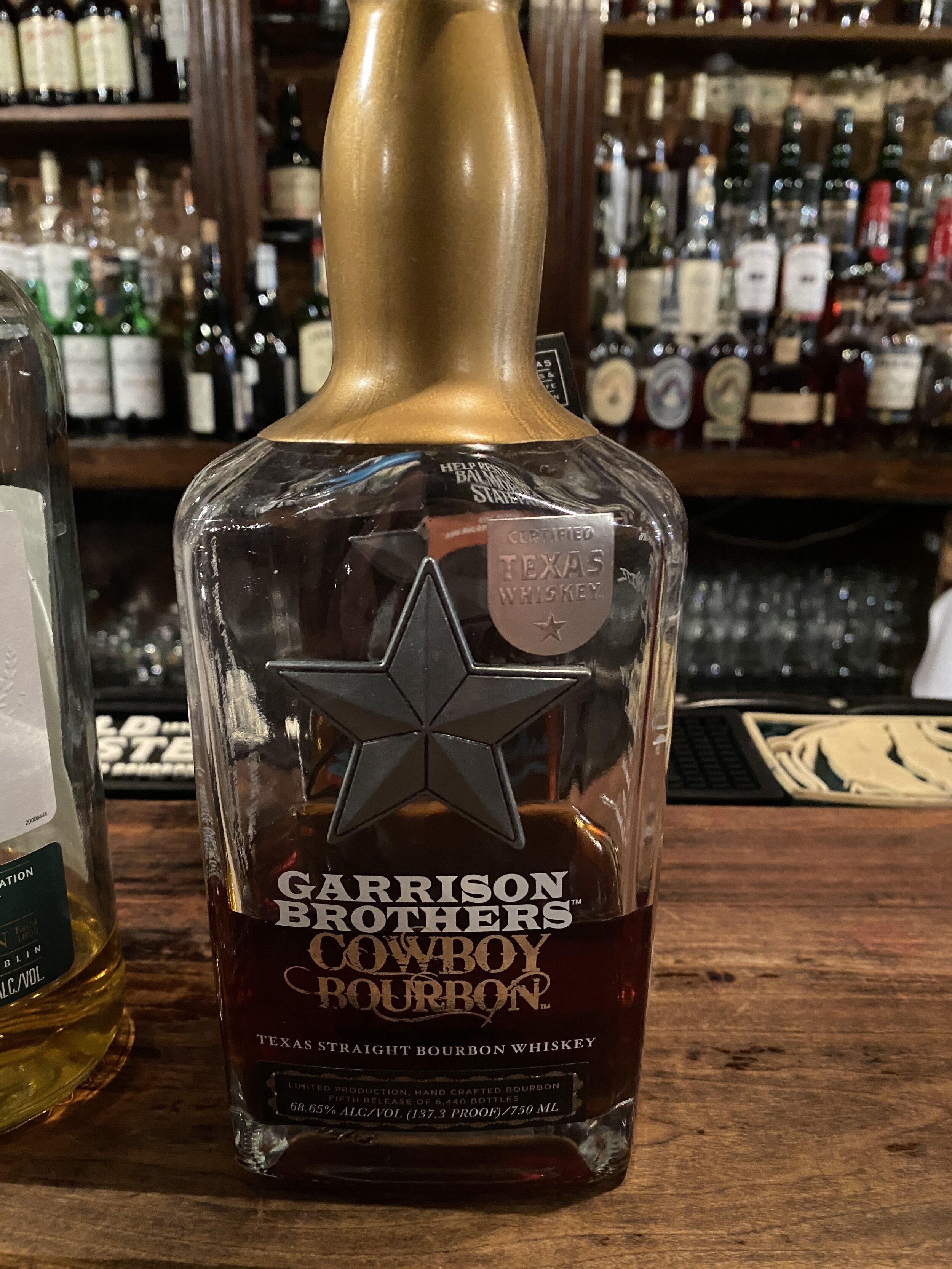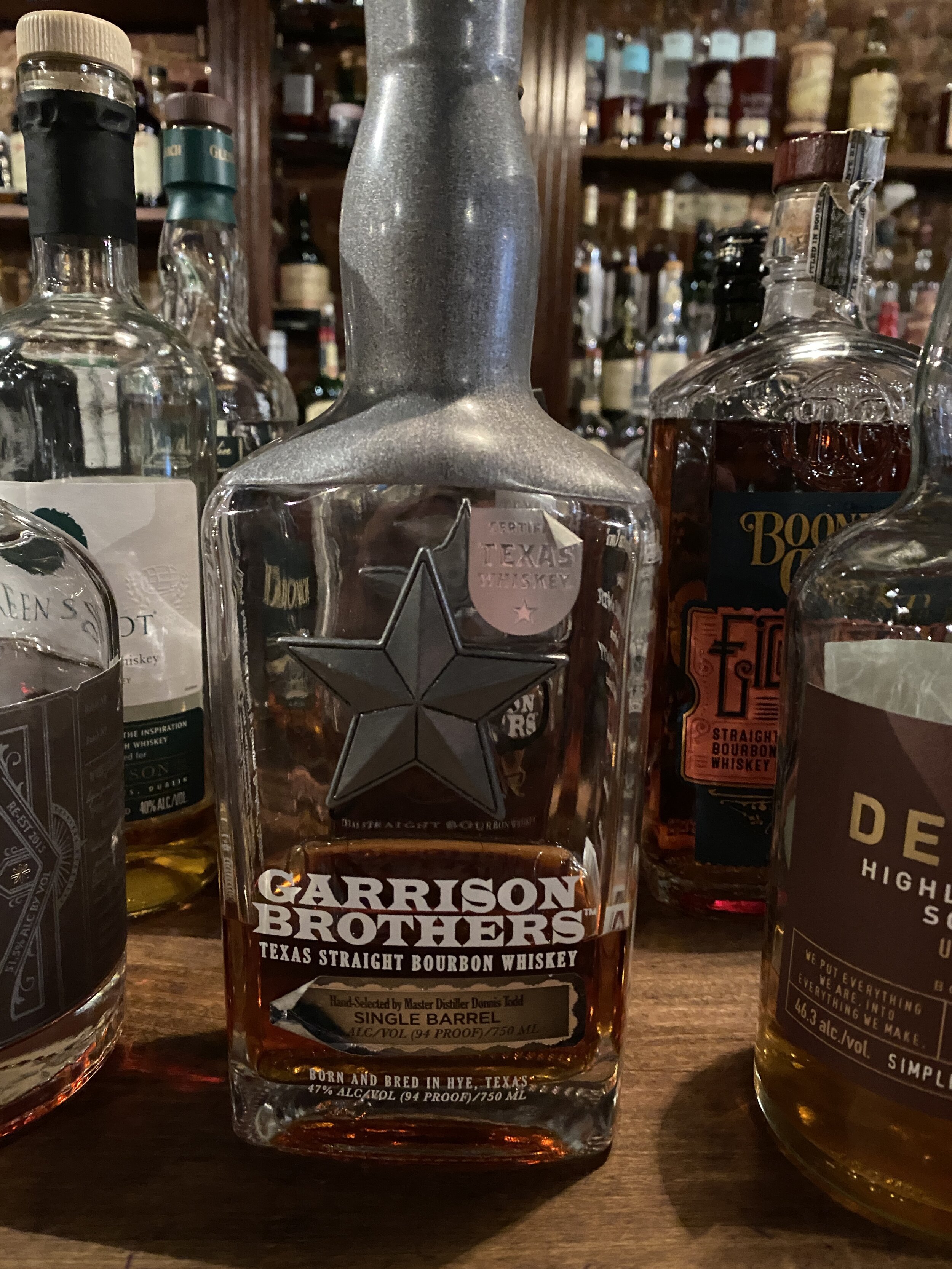Samuel Maverick Private Reserve Texas Straight Bourbon Whiskey
Stop me if you’ve heard this before: a brand “finds” an 18th- or 19th-century connection to whiskey in their family history or on their property. Maybe it’s a long-lost family member, great-grand-pappy with a yeast between his toes, a chicken-scratch whiskey recipe on a scrap of paper, a newspaper notice for their arrest for running illicit stills. They had a fire that burned their barrels and they found it worked great for whiskey aging. They needed to get the fish smell out of their barrels so they set them on fire purposefully.
Most of those stories are complete and utter nonsense, marketing fluff to drive interest and create a story that far too often overshadows (or hides) whiskey that is meh at best. But what if your story is true? What if you not only have the historical records to prove it but have stories not related at all to whiskey that further confirm an otherwise unbelievable life?
I give you: Samuel Maverick Whiskey. Dr. Ken Maverick, Samuel’s great-great-great-grandson, didn’t randomly discover his ancestor’s history. Samuel Maverick and the Maverick family are woven into the history of San Antonio, Texas, where the eponymous distillery now resides, just across from The Alamo. When Ken and Amy started the distillery in late 2017/early 2018, it was just the latest chapter in the family’s connection to the city.
Sam Maverick was a farmer. He started out in South Carolina before a duel with a senator’s son forced Maverick and his burgeoning family quite literally out of the country: at this time, Texas was still Mexican territory. You’ll want to know who that senator’s son was - but I’ll leave that for the podcast episode going live on March 8th. Leaving South Carolina, the Maverick’s headed west. Sam, a farm distiller (mostly of brandies) brought the first grape vines to Texas on the way.
The family headed to a Texas that was not only outside the US but under a Mexican Constitution that was significantly progressive for its time. Among other attractions, it provided incentives for Americans to move to the territory, including tax waivers and promises of land. Along the way, a raid by Native Americans destroyed the Maverick’s supplies. Sam used what he had and what he knew, and started distilling brandy on a tiny self-constructed still. That paid their way the rest of the journey.
In San Antonio, the Mavericks became legends of the town. Sam was likely the last man out of The Alamo, having ridden out two days before the massacre to request aid. He devoted much to his lost comrades, including land in and around the city: Travis Park, then the second largest public commons (after Boston) was donated by Maverick and named for his closest friend who died in the attack. He supported the Union, but his sons fought for the Confederacy (according to Ken, the family thinks it was more due to geography than outright southern sympathies, since Sam also supported Sam Houston’s efforts to maintain the Union prior to secession). He died in 1870 owning tens of thousands of acres in Texas, having served as mayor and justice with many roles besides.
Samuel Maverick had one hell of a life, but didn’t leave much of his own writings behind. Instead, we are fortunate to have his wife’s memoirs, those of Mary Maverick. Mary, who was literate, documented the pair’s - and family’s - lives all the way from the Carolinas to San Antonio. She is considered the first Anglo-American woman to live permanently in San Antonio, and would go on to continue her husband’s philanthropy after his death.
The Maverick family has clear and traceable roots from Sam all the way to Ken, making it one of the few whiskey-making families that can truly claim that distinction (the Beams and Dants come to mind).
With that said, some of their whiskey is just now coming of age. The bottle reviewed below - the Private Reserve - is aged approximately 4 years in a defunct bank vault that was once the largest west of the Mississippi and considered burglar-proof. The Maverick Whiskey team pumps in some of the San Antonio air, but the rock that makes up part of the vault casing also breathes enough to maintain a relatively constant, humid environment for the whiskey. It’s a unique maturation method for sure, though I’m not totally convinced that it works.
I think this particular offering simply needs more time. It’s not overly woody, but still has just a bit of craft funk that needs to be aged out by the oak. The one-of-a-kind aging method could certainly work, and I think it merits further consideration. Another six months to a year and this could be excellent.
Thank you to Maverick Distilling and Big Thirst Marketing for providing this bottle free of editorial constraint.
Samuel Maverick Private Reserve Texas Straight Bourbon Whiskey: Specs
Classification: Texas Straight Bourbon Whiskey
Origin: Samuel Maverick Distillery
Mashbill: 72% Texas-Grown Corn, 18% Rye, and 10% Malted Barley
Proof: 90 (45% ABV)
Age: 4 Years Old
Location: Texas, United States
Samuel Maverick Private Reserve Texas Straight Bourbon Whiskey Price: $75
Samuel Maverick Private Reserve Texas Straight Bourbon Whiskey: Tasting Notes
Eye: Dark amber. Thin rims, broken legs and small teardrops.
Nose: Big and bold - explodes out of the glass. Distinct dryness and caramel, roasting corn on an open flame. Grape must. Settles down after that initial burst to the core vanilla and taffy, though a Texas-profile grain note remains.
Palate: Brandy-esque, so much corn oiliness it almost stops the flavors getting through. Unsweetened cola syrup, vanilla jelly beans. Mouthfeel is silky but thin, carrying just a touch of pepper and oak astringency. Settles under the tongue, losing its sweetness to a darker, savory corn note. Caramelizing grains in the bottom of a pot still.
Finish: Short side of medium. Burst of tobacco leaf, black licorice, and a creamy oak hit at the end.
Overall: This has a clear identity that separates it from other Texas whiskies (something the Mavericks are keen on doing - making a whiskey made in Texas rather than a “Texas whiskey”). I genuinely think this has great promise but just isn’t quite there. Another six months to a year might round out some of the young wood dryness and also break down the corn oils into different, more palatable compounds. One to keep an eye on.
Final Rating: 5.9
10 | Insurpassable | Nothing Else Comes Close
9 | Incredible | Extraordinary
8 | Excellent | Exceptional
7 | Great | Well above average
6 | Very Good | Better than average
5 | Good | Good, solid, ordinary
4 | Has promise but needs work
1-3 | Let’s have a conversation









